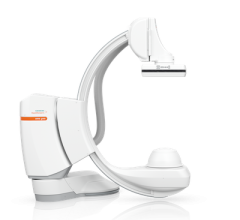
Greg Freiherr has reported on developments in radiology since 1983. He runs the consulting service, The Freiherr Group.
BLOG: Why You Should Not Use CDs To Transfer Patient Images

A lot of computers are being made without disk readers, an indication that this form of media is on the way out. So why does the medical community continue to rely on CDs to transfer images?
Regular email is not an option because of the privacy issues that surround health care data. Managing patient safety and privacy concerns naturally creates special requirements that healthcare professionals must meet, said Ambra Health CEO Morris Panner: “The biggest barrier today has been that medical information is, of course, special. You cannot simply attach a medical file to an email.”
Medical data must be encrypted or its transport will not be HIPAA compliant. “It is very important that we recognize that,” he said.
But the technology for securely sharing medical images through electronic transfer exists today. Leveraging its cloud-based technology and encryption, Ambra Health can send patient images, while protecting patient health data. Ambra solutions are HIPAA compliant, Panner said. The company’s patented encryption solution provides secure transmission over the internet, splitting off certain patient information from the images.
This and similar technologies available from other vendors are beginning to catch on. And, in as few as three years, electronically sharing medical images could overshadow CD transfers, Panner predicted. When that happens, “everyone will look back and ask why it took so long,” he said
CD Use Today
Ambra Health is just one of several companies pushing the medical community to drop CDs. Currently, however, only a small number of the thousands of medical facilities in the U.S. transfer medical images electronically.
Between 10 and 25 percent of transferred medical images are sent from one site to another electronically, according to Panner. By comparison, large U.S. medical facilities routinely share a quarter million or more CDs per year, he said: “So, with hundreds of significant institutions in the United States, you are talking about millions of CDs being moved by ‘sneakernet’ every year.”
The practice stirs memories of the bygone days of medical film, when patients borrowed copies or even originals of their images from film libraries, then transported them to providers at other locations. Occasionally these films were lost or damaged. The same can happen to CDs.
Additionally, CDs are prone to interoperability issues, which can cause headaches, particularly among receiving sites. (The second article in this series of three will focus on interoperability issues.)
Bad Things Happen
When useable images don’t get to where they are supposed to, redundant imaging studies may be ordered. This can lead to unnecessary exposure of the patient to ionizing radiation (if X-ray based imaging modalities are ordered); scheduling issues by the provider; and added financial costs for patient, provider or insurer.
Even when CD transfers work as intended, there are expenses. Disks must be purchased, as must the drives to read them. CD use also requires trained personnel whose scheduling and labor charges are incurred when burning and retrieving images.
Ironically, if institutions want to transfer medical images and do not want to use electronic image sharing technologies, they have no choice but to use CDs.
“They can’t just email the images,” Panner said. “That would be a (HIPAA) violation.”
Greg Freiherr is a contributing editor to ITN. Over the past three decades, he has served as business and technology editor for publications in medical imaging, as well as consulted for vendors, professional organizations, academia, and financial institutions.
Editor’s Note: This is the first blog in a series of three under the theme “Sharing Patient Images.” The next blog in this series will focus on interoperability issues in the transfer of medical images.
Related content:
BLOG: Why Interoperability Is Essential When Transferring Patient Images
Mobile Device App Viewing in Radiology
Ambra Health Announces Integration With Box


 December 04, 2025
December 04, 2025 









